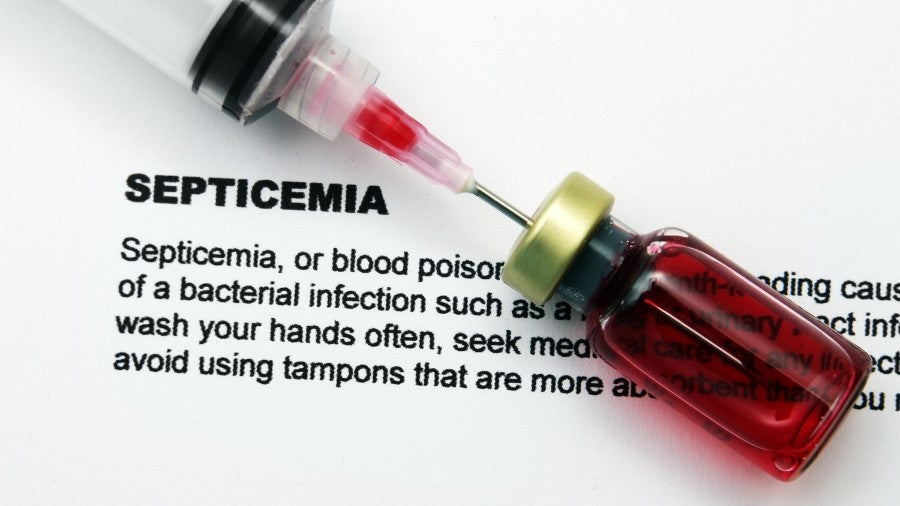A septic spot is a type of skin infection that can appear anywhere on the body. These spots often resemble small blisters filled with yellow or white pus, which makes them easy to confuse with acne. If left untreated, a septic spot can develop into sepsis—a life-threatening condition where the body’s response to infection leads to widespread damage to organs and tissues.
Septic spots may start small, but they can progress quickly, and without proper treatment, they could become fatal. The term "septic" comes from the medical word "septicaemia," which refers to an infection of the bloodstream that can spread to multiple organs.
Disclaimer: This article is intended for general informational purposes only. It is not a substitute for professional medical advice, diagnosis, or treatment. Always seek the advice of your physician or other qualified health provider with any questions you may have regarding a medical condition.
Who is at risk of developing a sepsis?

While anyone can develop sepsis from an untreated infection, certain groups are at higher risk, including newborns exposed to bacteria during birth, elderly adults with weakened immune systems, individuals with chronic illnesses like diabetes, and those with compromised immunity due to treatments such as chemotherapy or autoimmune disorders.
Recognising Sepsis Symptoms
Early detection is essential. Key signs include persistent spots that don’t fade under pressure, fever, breathing difficulties, rapid heart rate, or confusion. Seek medical attention immediately. Sepsis can cause noticeable changes to the skin due to the body’s response to infection. Common skin signs include blue, gray, or pale discoloration, particularly in the lips, tongue, or extremities, indicating poor circulation and oxygen delivery to vital areas.
A blotchy or mottled appearance may also occur. One key sign of sepsis-related skin changes is a rash that doesn't fade when you press a glass against it, known as a "non-blanching" rash. This is a serious warning sign and requires immediate medical attention. These skin symptoms, combined with other sepsis indicators, highlight the severity of the condition and the need for urgent care.
Is sepsis (septic, septicemia) dangerous?

Sepsis is extremely dangerous, as the immune response to infection triggers widespread inflammation, reducing blood flow to vital organs like the brain, heart, and kidneys. This can lead to organ failure, blood poisoning, and potentially fatal septic shock.
How Long Does It Take to Die from Sepsis?
Sepsis can be fatal in as little as 12 hours if left untreated, making it a medical emergency that requires immediate attention. The condition can progress rapidly, causing widespread damage to organs and tissues. For every hour that treatment is delayed, the risk of death increases by 4-9%.
The mortality rate for septic shock, a severe form of sepsis, can be as high as 40%. Prompt treatment with antibiotics, fluids, and supportive care can improve outcomes, and most people recover from mild sepsis if treated early. However, sepsis can cause lasting damage to vital organs like the heart, lungs, and kidneys, and survivors may face ongoing health challenges and a heightened risk of future infections.
Personal Experience with Suspected Sepsis
When my newborn son developed a spot that didn’t fade under pressure, I was immediately worried it could be a septic spot. The pediatric nurse noticed it during a routine checkup and acted quickly, recommending a course of antibiotics as a precaution. At first, I thought it was an overreaction, and I felt frustrated about the hospital stay.
However, after a second nurse examined the spot, we learned it was just dirt, not a septic infection. Despite the relief, I realized the nurse's caution had been invaluable. Sepsis can escalate quickly, and timely treatment is essential for preventing severe damage or death. We were lucky that it wasn’t a serious infection, but this experience taught me how important it is to stay alert.
Sepsis is a serious condition that requires awareness and prompt action. By understanding the risks, symptoms, and treatments, you can protect yourself and your loved ones. If you notice any concerning signs, consult your doctor without delay.
Treatment and Prevention for Sepsis

While proper medical treatment is essential for conditions like sepsis, adopting a balanced diet, regular exercise, stress management, and adequate sleep can help support your immune system and overall well-being. Exploring












